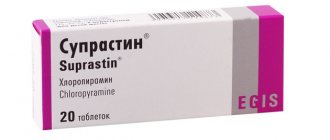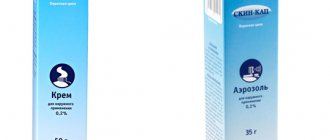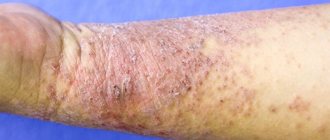Price
Allergology-immunology
| Name of service | Price |
| Consultation with an allergist-immunologist, primary | 3 500 ₽ |
Advantages
- The latest, constantly updated equipment
- Interest-free installments for all services
- Online consultations with an ENT doctor
- Visit of an ENT doctor to your home
- Friendly and qualified staff
- 24/7 ENT assistance
Atopic dermatitis is a type of chronic skin disease that can come and go throughout life and overlap with other types of eczema. Characterized by redness and itching of the skin. Unpleasant symptoms can greatly affect sleep and daily activity, reducing quality of life and mood, causing psychological complexes (especially with atopic dermatitis on the face in adults).
There is no need to endure exacerbations of atopic dermatitis or try to cope with them on your own. It is impossible to completely cure the disease, but it can be successfully prevented. To do this, you just need to choose competent therapy for atopic dermatitis, which begins with contacting a professional allergist in Moscow.
Causes
Identifying the exact cause can be difficult. The disease can be triggered by allergens (if we are talking about contact), eczema and other skin diseases, irritation of the ear canal with chemicals, purulent discharge from the ears, and dermatitis on the body.
The main provoking factors are:
- metabolic disease;
- low immunity;
- presence of chronic diseases;
- predisposition to allergic reactions;
- taking medications;
- mechanical damage to the ear;
- intoxication of the body;
- scratching, causing the skin to become infected.
You can guess the cause of dermatitis by the first symptoms.
Dermatitis behind the ears can develop when wearing glasses. Metal or plastic frames are an allergen. Headphones, hearing aids and earrings can also cause an allergic reaction.
Symptoms of atopic dermatitis
Manifestations of atopic dermatitis include:
- cracked, rough, dry, swollen skin;
- itching, which can be very severe, especially at night;
- red to brownish-gray patches of skin, especially on the hands, feet, ankles (atopic dermatitis on the legs), wrists, neck, upper chest, eyelids, inside the elbows and knees, and in infants on the face and scalp ;
- blisters that may leak fluid and form a crust when they dry out.
Get medical help right away if you or your child have a rash that looks infected and has a fever.
Types of seborrheic dermatitis
During the process of inflammation, dandruff appears in the form of gray-yellow plaques that densely cover both the root zone and the entire length of the hair. This is quite unpleasant and, of course, unaesthetic. With liquid seborrhea of the head, the composition of sebum does not change, but its quantity increases several times. Hair quickly becomes dirty, greasy, sticky, and takes on an unkempt appearance. This whole process is also accompanied by dandruff with yellow-gray plaques. The disease is accompanied by itching and, if left untreated, can lead to patchy baldness - alopecia.
The next type of seborrhea that we will tell you about is dry seborrhea. With the disease, there is a decrease in the secretion of the sebaceous glands and sebum production. The most common cause is a lack of sex hormones, as well as a decrease in the sensitivity of target cells to androgens. Due to lack of sebum, the scalp dries out, forming dandruff. It covers the entire scalp, and when moved it falls off onto the shoulders. All this is accompanied by severe itching and a feeling of tightness. In some cases, pink spots may appear, covered with small flakes of dandruff, so-called seboreids.
The third type of seborrhea is mixed. It combines the signs of oily seborrhea with dry seborrhea. Typically, in this form of the disease, the skin of the face is affected by oily seborrhea, and on the scalp there are signs of dry seborrhea - itching, crumbling dandruff.
MIGUNOVA ANASTASIA ANDREEVNA
Cosmetologist
Initial consultation: RUB 4,500
Make an appointment with a doctor Instagram
VYATKINA IRINA SERGEEVNA
Gynecologist-endocrinologist
Initial consultation: RUB 9,500
Make an appointment with a doctor Instagram
KALININA EKATERINA ALEXANDROVNA
Cosmetologist
Initial consultation: RUB 4,500
Make an appointment with a doctor Instagram
KOZLOVA EKATERINA NIKOLAEVNA
Gynecologist-endocrinologist, oncologist
Initial consultation: RUB 6,000
Make an appointment with a doctor Instagram [/ux_image_box]
OZTURK IZEL ALIEVNA
Cosmetologist, dermatovenerologist
Initial consultation: RUB 4,500
Make an appointment with a doctor Instagram
Causes of atopic dermatitis
Research shows that some people with eczema, especially those with the disease atopic dermatitis, have a mutation in the gene responsible for the formation of filaggrin. Filaggrin is a protein that helps the body maintain a healthy protective barrier in the outermost layer of skin. Without enough filaggrin to create a strong skin barrier, bacteria, viruses and allergens easily enter. This is why many people with signs of atopic dermatitis have very dry and infection-prone skin.
Allergens that provoke skin reactions can be very different. These include both natural human manifestations of the body (sweat, stress) and external ones (detergents, dust, pollen, food, cosmetics).
Symptoms
The main symptom is itching, irritation and dry skin of the ears. The skin behind the ear will be swollen. Symptoms differ depending on the course of the disease.
Ear dermatitis can occur in two forms:
- Spicy. Symptoms appear suddenly with itching and skin lesions. The skin peels off or, conversely, weeping wounds appear on the surface, from which pus and sticky contents are released. A rash in the form of blisters is noticeable, there is a hard crust. Symptoms are complemented by increased body temperature and nasal congestion.
- Chronic. The disease is characterized by two stages, which can alternate. During an exacerbation, a person suffers from severe itching and rashes appear; during remission, symptoms may be absent. Redness and irritation may spread beyond the ear to the skin behind the ears.
If you constantly scratch the skin in the ear, then boils will appear, which contribute to the narrowing of the ear canal, and this leads to hearing loss.
Atopic dermatitis in children
Cutaneous atopic dermatitis often begins in childhood, usually in the first six months of a child's life. Sometimes childhood atopic dermatitis may improve as they get older, while in other children it gets worse in adulthood.
Infants and older children may experience foodborne atopic dermatitis, attacks from eating certain foods, including eggs, milk, soy and wheat. If you suspect that a certain food has caused your child's atopic allergic dermatitis, tell the doctor and ask how to identify a potential food allergy.
Complications
Complications from dermatitis are rare. With seborrheic appearance, there is a high probability of developing dermatosis of the ear. The disease can spread to the neck and cheeks. Other types of ear canal dermatitis can develop into eczema without treatment.
Complications can arise due to severe itching. When scratching, there is a high risk of infection. If the infection gets inside the ear, the inflammatory process of the ear canal will begin. This consequence significantly complicates the treatment process.
Atopic dermatitis: recommendations for avoidance
The following clinical recommendations help prevent flare-ups of atopic dermatitis:
- Try to identify triggers that make the condition worse and avoid them.
- Moisturize your skin at least twice a day (relevant if atopic dermatitis is concentrated on your hands). Creams, ointments and lotions retain moisture and form a protective barrier against irritants. Choose a cosmetics brand that suits you. The same applies to the manifestations of atopic dermatitis on the face. For children, lubricate the skin with bath oils, creams or ointments (check with your doctor first).
- Take shorter baths or showers. Limit your bath and shower time to 10-15 minutes. Use warm, not hot water.
- Use only gentle, mild soap for sensitive skin. Deodorant and antibacterial soaps remove more natural oils and dry out the skin.
- After bathing, gently pat your skin dry with a soft towel and apply moisturizer while the skin is still damp.
Kinds
There are three types of ear dermatitis in humans:
- Contact. The disease occurs as a reaction to an external irritant: the material from which earrings, headphones, glasses frames are made, as well as shampoos, conditioners, hair dye, ear drops or ointments. In children, irritation may occur due to synthetic caps. The main symptoms of this type of dermatitis are swelling, redness of the skin, itching, rashes with serous exudate, and the presence of crusts.
- Seborrheic dermatitis. The disease is caused by the fungus Malassezia furfur, which parasitizes the scalp. Seborrhea is a chronic disease with a hereditary predisposition. The appearance of this type of dermatitis in the auricle can be caused by vitamin B deficiency, stress, or taking medications. Characteristic symptoms are plaques covered with a yellow, greasy crust. When combing, many scales appear.
- Atopic dermatitis. The cause of this disease can be a hereditary predisposition, long-term treatment with ear drops, inflammation of the ear, as well as an allergic reaction (skin or food). Symptoms are severe itching of the skin both in the ear canal itself and outside the ear, thickening of the skin, blisters with serous contents, which, after opening, turn into weeping spots. Read more about atopic dermatitis →
Treatment of atopic dermatitis
In order to understand how to treat atopic dermatitis, you need to identify the triggers that provoke eczema. If they cannot be removed, your doctor may prescribe one or a combination of the following medications to treat the symptoms of atopic dermatitis:
- Medicines that control itching and promote skin repair. These include creams and ointments with corticosteroids, antihistamines or calcineurin inhibitors, which affect the immune system to control the skin reaction.
- Drugs to fight infection. These are antibiotic creams or oral antibiotics to treat the infection.
- Oral corticosteroids that control inflammation. For more severe cases of atopic dermatitis in adults, your doctor may prescribe oral corticosteroids such as prednisone. These drugs are effective, but should not be used long term due to potential serious side effects.
The Ear, Nose and Throat Clinic has developed medicinal and physiotherapy regimens for the treatment of atopic dermatitis in children and adults. Make an appointment with our allergist!
Seeing a doctor in a timely manner will help maintain your health.
Don't delay treatment, call right now. We work around the clock. tel. (24 hours a day)
Treatment of seborrheic dermatitis
The treatment of seborrhea should be approached comprehensively, since there is no single pill for this unpleasant disease. Specialists at the Marina Ryabus Clinic use modern methods in the treatment of seborrhea. Therapy includes a set of procedures aimed at identifying and eliminating the cause of the disease. And also to get rid of dandruff and other unpleasant symptoms. At the first consultation, a diagnostic examination is carried out to determine the causes of the development of pathology of the sebaceous glands and clarify the form of seborrhea. Treatment of seborrhea, both oily and dry, is accompanied by drug correction. Hormonal therapy is usually prescribed, as well as antifungal therapy.
Experts recommend that the patient normalize his diet and adjust his intake of dietary supplements based on the results of laboratory tests. Treatments include laser and injection therapy. Mesotherapy - injections of vitamin complexes, amino acids. They normalize the functioning of the sebaceous glands and blood circulation. Thanks to this, the sebaceous hair follicles are nourished with biologically active substances. This technique also helps suppress the growth and proliferation of yeast fungi that cause dandruff.
At the clinic we use Hair X and Viscoderm Skinko. The injections are easily tolerated by patients due to the physiological nature of the solution and the absence of preservatives. The composition of the drug provides multidirectional complex complementary therapy, effectively restores the natural protective and regenerative functions of the skin.
Let's move on to laser treatment of seborrhea. The clinic presents the Fotona SP Dynamis Pro device, which can effectively solve hair loss problems, as well as treat oily and dry seborrhea of the scalp. The advantage of such treatment is comfort, safety, painlessness and effectiveness.









